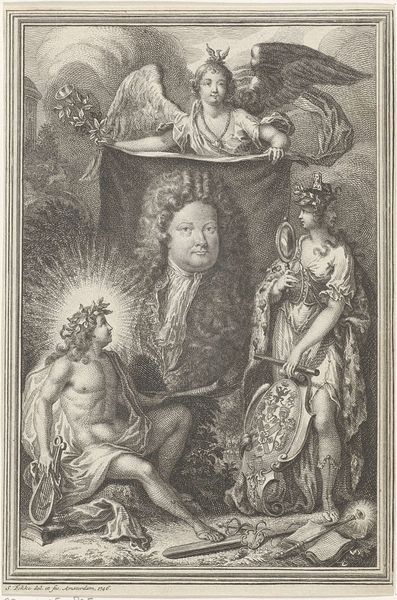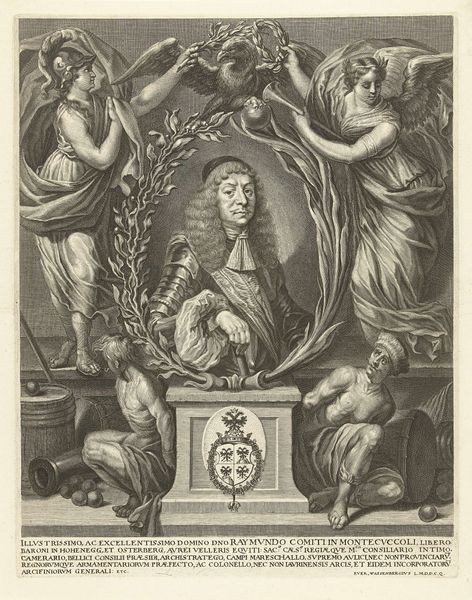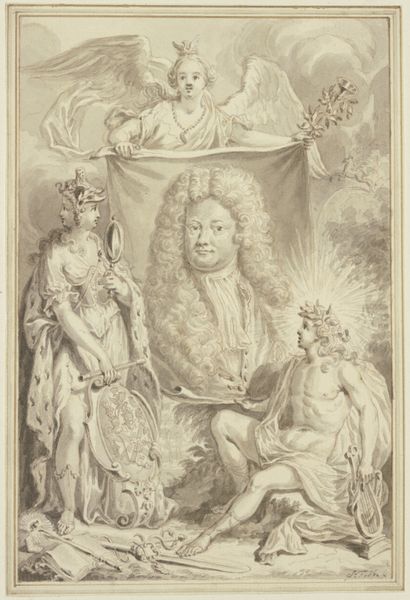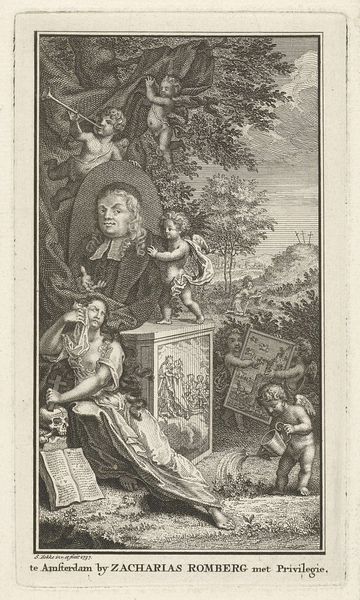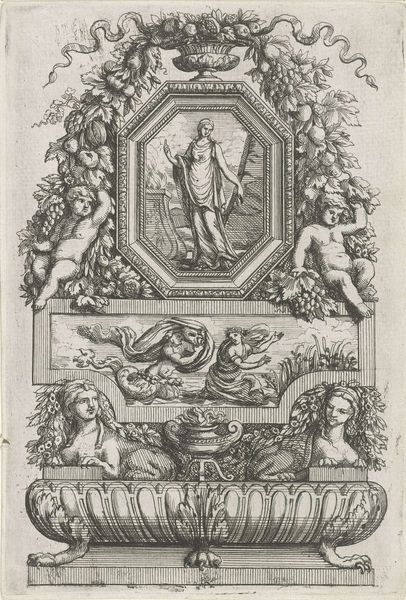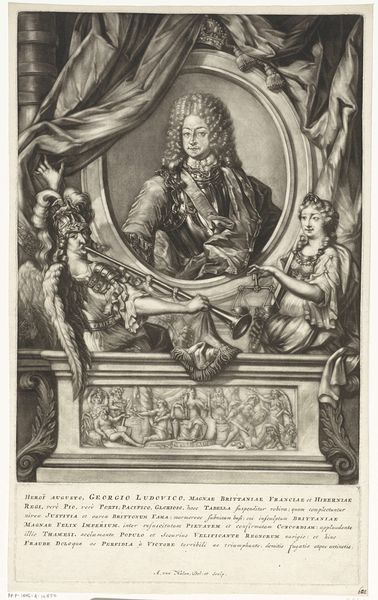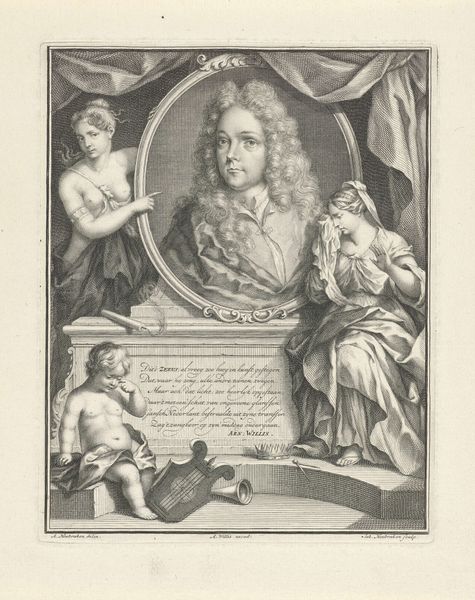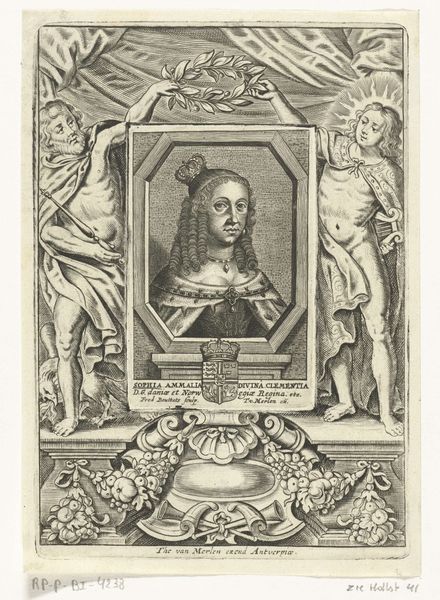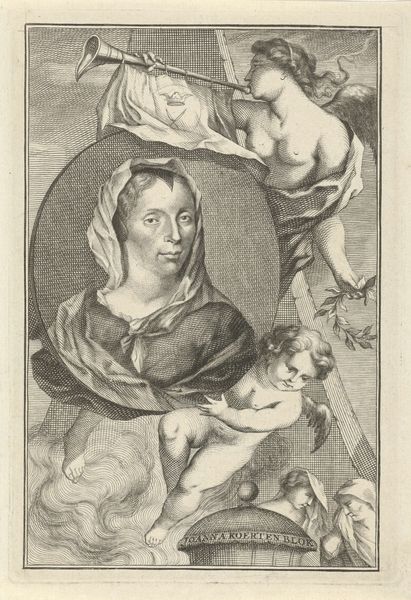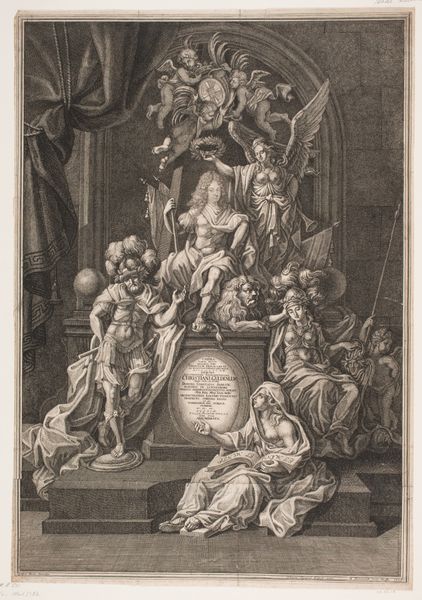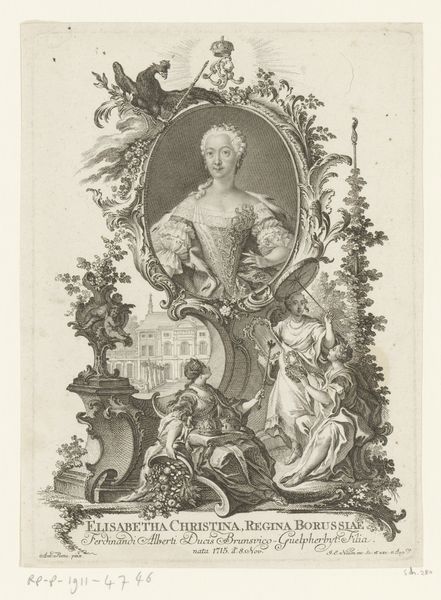
print, engraving
#
allegory
# print
#
line
#
history-painting
#
academic-art
#
graphite
#
engraving
Dimensions: height 213 mm, width 163 mm
Copyright: Rijks Museum: Open Domain
Curator: This engraving from 1739 by Pieter Tanjé presents us with portraits of Lorenz Heister and Hendrik Ulhoorn. Editor: It has a distinctively… busy composition, doesn’t it? It strikes me as a visual representation of the complex social standing they were trying to convey, layering symbolism upon symbolism. Curator: Absolutely, these composite portraits are fascinating. Tanjé has positioned each man in an oval frame, surrounded by allegorical figures. It really is meant to elevate their status and accomplishments. Editor: The placement of these men within these elaborate settings speaks volumes about power dynamics. I am particularly struck by the inclusion of figures representing things like medicine. How would those relate to the identities of Heister and Ulhoorn? Curator: Precisely! Lorenz Heister was a renowned surgeon and anatomist. You see symbols related to his medical expertise – the serpent-entwined staff of Asclepius, for instance, signifies healing and medicine, echoing traditions from ancient Greece. Editor: So, each element works as a symbol legitimizing professional and societal roles. The way these symbols act as visual shorthand for complex identities feels very performative and reinforces hierarchical structures. How fascinating! Curator: Ulhoorn, on the other hand, was a prominent lawyer. We don’t see overtly legal symbols but rather figures that embody virtues like wisdom and justice, placing him in a realm of intellectual and moral authority. Editor: These prints were tools in crafting and controlling a narrative around their reputations. To our eyes, that is somewhat dated, but at the time, constructing public image and authority this way carried significant political and social currency. Curator: It truly encapsulates the 18th-century approach to portraiture, where individual likeness melded with grand allegorical conceits. What seems excessive to us was actually a deliberate strategy to underscore their prestige. Editor: Reflecting on it, I'm reminded how deeply intertwined individual identity has always been with public representation. Tanjé's print prompts us to see art's role in both celebrating and perpetuating social roles and the power of curated imagery. Curator: I am struck by how this artwork offers such insight into the use of iconography for projecting the identities, accomplishments, and social status of individuals centuries ago. It acts as an intricate historical capsule.
Comments
No comments
Be the first to comment and join the conversation on the ultimate creative platform.
